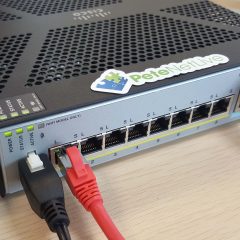Certificate Services Error – ‘The Email name is unavailable and cannot be added to the Subject or Subject Alternate name’
KB ID 0001029 Problem Server: Windows Server 2012 R2 Client: Windows 8 Enterprise I was setting auto-enrollment this morning, and the computer certificates were getting issued but not the user ones. The policies were correct, the registry keys on the clients were correct, even RSOP told me the users ‘should’ be getting certificates. However nothing was working so I decided to ‘manually enroll’ and this...
Event ID 29
KB ID 0001032 Problem Seen on a Microsoft Certificate Services server running NDES. Log Name: Application Source: Microsoft-Windows-NetworkDeviceEnrollmentService Date: 04/02/2015 11:22:26 Event ID: 29 Task Category: None Level: Error Keywords: User: PETENETLIVESVC_NDES Computer: PNLPKI00v.petenetlive.com Description: The password in the certificate request cannot be verified. It may have been used already. Obtain a new password to...
Event ID 128 – Certification Authority
KB ID 0001033 Problem Seen in the application log of a Windows Certificate Services server (Server 2012 R2) Log Name: Application Source: Microsoft-Windows-CertificationAuthority Date: 07/02/2015 15:55:26 Event ID: 128 Task Category: None Level: Warning Keywords: User: SYSTEM Computer: PNLPKI00v.petenetlive.com Description: An Authority Key Identifier was passed as part of the certificate request 29. This feature has not been...
Cisco AnyConnect – Securing with Microsoft Certificate Services
Part 1 (How to Configure Microsoft Certificate Services for AnyConnect) KB ID 0001030 Problem I’ve done a lot of AnyConnect deployments, and I’ve even done them with certificates in the past. I’ve seen plenty of articles and blogs that say ‘It would be better to use a PKI deployment like Microsoft Certificate Services’, but there’s very little info out there on how to set it up. I have a client...




